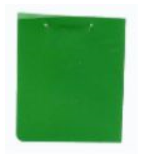The High Court of New Zealand in Energy Beverages LLC v Frucor Suntory NZ Limited [2020] NZHC 3296 ruled that energy drink company Frucor Suntory NZ Ltd’s (Frucor) non-traditional green colour trade mark was valid. This decision is a rare example of a New Zealand based Court analysing non-traditional marks and highlighting the difference in Australia’s position. A full copy of the decision can be found here.
Background
This case concerned the appeal of two decisions of the Assistant Commissioner of Trade Marks, involving the use of colour in the marketing of energy drinks. The appellant was Energy Beverages LLC (EB), the owner of Mother energy drinks. EB sought to invalidate and revoke the trade mark owned by Frucor, the owner of V drinks, for the green colour in its bottles, packaging and advertising.
Frucor’s trade mark is a square sample of an emerald green colour with the following explanation:
“The mark consists of the colour green (Pantone 376c), as shown in the representation attached to the application, applied as the predominant colour to the goods, their packaging or labels.”
Frucor’s Trade Mark
Initial claim
In May 2020 EB filed a revocation application arguing that Frucor’s Trade Mark was invalid as it infringed its use of the colour mix similar to Pantone 376c in the Kicked Apple get-up for its Mother energy drinks (see image below). Frucor submitted that the darker shade of green demonstrated in its trade mark was due to the Intellectual Property of New Zealand (IPONZ) digitizing the square sample causing an alteration in the colour.
Pantone 376c
EB further claimed that Frucor did not make genuine use of Frucor’s Trade Mark during the relevant period. Assistant Commissioner, Wendy Aldred of IPONZ office rejected these claims, upholding the validity of Frucor’s Trade Mark.
The Appeal
EB appealed to the High Court of New Zealand on two grounds. In the first appeal EB sought a declaration of invalidity on the grounds that the word “predominant” in the written explanation meant that what appeared on the register was not a trade mark, as defined in section 5 of the Trade Marks Act 2002, as it was too imprecise to constitute a sign capable of graphic representation.
In the second appeal ED sought to revoke Frucor’s Trade Mark for non-use on the ground that albeit Frucor was using Pantone 376c, as described in the explanation, it was not using the emerald green as shown in the square sample depicted on the register.
Justice Dobson agreed with IPONZ’s decision, confirming that the Court would favour the wording of the explanation over the graphical representation. The Court found that it was common practice to use the word “predominant”, which was not imprecise when there was just one colour on the register. Having found that the written explanation of the trade mark overrides the representation, the Court rejected EB’s argument of non-use.
Australia’s Position
A similar case came before the Federal Court of Australia between Frucor and EB’s parent company The Coca Cola Company (Coca Cola) in 2018.
Frucor attempted to register the shade Pantone 376c as the trade mark for the packaging of its V energy beverages. Coca Cola opposed the registration and the delegate of the Registrar of Trade Marks found the differences in the colour square and written explanation caused the mark to be ambiguous and un-registrable.
Frucor appealed to the Federal Court of Australia. Justice Yates held that the identity of the Frucor Trade Mark must be ascertained objectively rather than found on subjective intentions, confirming the Delegate’s initial decision. A full copy of the Federal Court of Australia decision can be found here.
Key Takeaways
The case provides helpful information to assist in interpreting non-traditional marks that appear on the Trade Mark Register of New Zealand. The case indicates the importance of accurately describing trade marks in the written application for registration in New Zealand.
Further, the case highlights the challenges of securing non-traditional marks in Australia and the need to ensure that the evidence demonstrates that the colour has objectively become recognised as the distinctive trade mark.




 />i
/>i



